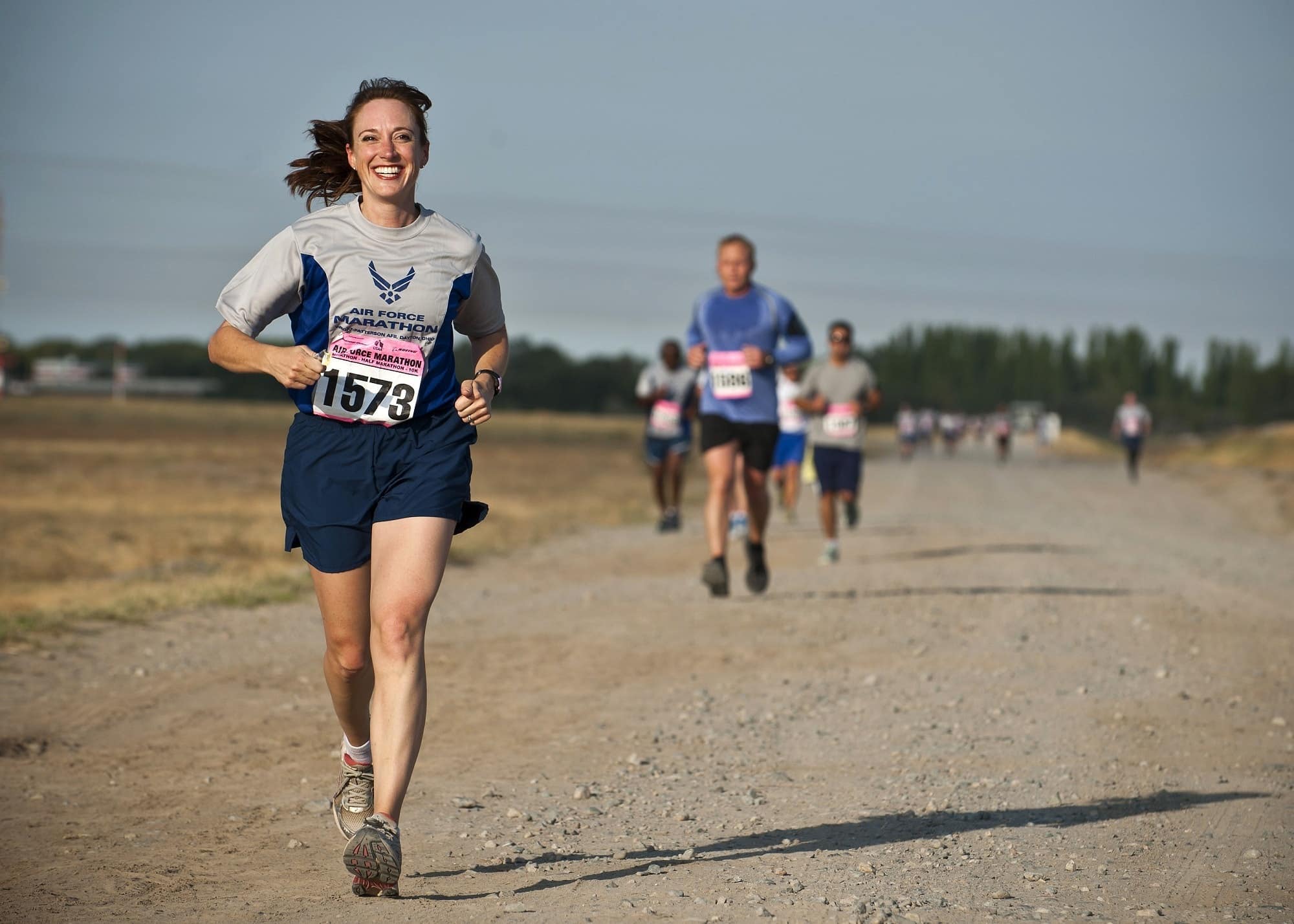
Learning to run faster starts with the proper form. Like any exercise, your form counts. It affects muscle pulls and your speed. It makes every movement more efficient. That leads to more endurance and speed. Allow your arms to swing freely as you keep your shoulders relaxed. Your stride, the strike position of your feet, your cadence, and a wealth of other form tips, from the placement of the feet to how to keep your head held correctly, all play a vital role in form. Many changes you make to your running form also improve your overall posture.
Practice, practice, practice.
Run more often. You won’t run your best if you only run once a week. Use running as a substitute for one or two gym days, spending three days at the gym and three days running. If you can’t run outside, run on the treadmill in the gym instead. Counting your strides by identifying how many steps you take in a minute can also help. It’s called stride turnover. Stride length also plays a role in your speed. While some people focus on improving those factors, many experts believe that your body will find the most efficient combination the more you run.
Breathing techniques can increase endurance.
Breathing in through the nostrils and out through the mouth is the first breathing technique to learn. Don’t try to learn it as you run. Start before you take to the asphalt. Add belly breathing for deeper breaths. Make breaths deeper and blow all the breath out as deeply as possible. Combining those two will help you maintain speed longer.
Take a tempo run once a week.
Tempo runs can increase your anaerobic threshold—how long it takes and how much exertion before the body switches from aerobic to anaerobic metabolism. You can do it by running at a comfortable, easier pace for 10 minutes and switching to 20 minutes at a pace sustainable for 6 miles. Finish the last ten minutes at a cool-down rate. Your pace should be fast enough that you can’t carry on a conversation, but slow enough your body isn’t begging for air.
- Make your run a modified HIIT—high intensity interval training—workout. Warm up first, then do a lap at a 5 K pace. Do the next lap at a recovery or jogging pace. Alternate speeds between fast and recovery up to six times.
- Run on hilly terrain. It can be on asphalt or concrete as long as there is an incline. Run up the hills as fast as possible. Jog down the other side. Do as many hills as you can with maximum benefits from 10 hills.
- Get good shoes. While your other clothing should be layered and appropriate for the weather, it doesn’t have to be fancy. Your shoes are a different matter. Use the correct shoes for the terrain you run, whether it’s a treadmill, gravel, or woodsy terrain.
- While you won’t run faster, you will run safer by letting people know where you run. Carry a phone with you and allow a friend or family member to track you. If running at night, wear reflective clothing.
For more information, contact us today at Body Sculptors Personal Training
